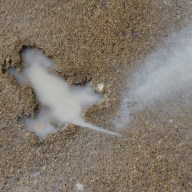
A cockroach species never seen before in the U.S. has been found in New York City, according to a study published by the Journal of Economic Entomology.
The species, called Periplaneta japonica, are known for their ability to survive freezing outdoor temperatures in addition to warm temperatures. It was first spotted by an exterminator working on the city’s High Line park in December 2012.
Jessica Ware and Dominic Evangelista, insect biologists at Rutgers University, identified the species and documented its presence in the study.
“About 20 years ago colleagues of ours in Japan reared nymphs of this species and measured their tolerance to being able to survive in snow,” Ware said in a statement.
“As the species has invaded Korea and China, there has been some confirmation that it does very well in cold climates, so it is very conceivable that it could live outdoors during winter in New York. That is in addition to its being well suited to live indoors alongside the species that already are here.”
It is not clear how the species arrived, but Ware and Evangelista said they suspect the cockroaches may have traveled inside the soil of one of the many plants that decorate the High Line.
While it is possible for New Yorkers to spot the new creatures walking around outside this winter, their presence should not be a cause for alarm, the study’s authors said.
The new species are expected to compete with the cockroaches already living in the city, and as they compete, “their combined numbers inside buildings could actually fall because more time and energy spent competing means less time and energy to devote to reproduction,” Evangelista said.
To reduce the chances of any cockroaches entering homes, Ware advises New Yorkers to sweep up their floors, remove clutter and consider using a dehumidifier. She explained that dry air harms the insect’s eggs and reduces their ability to reproduce.
















